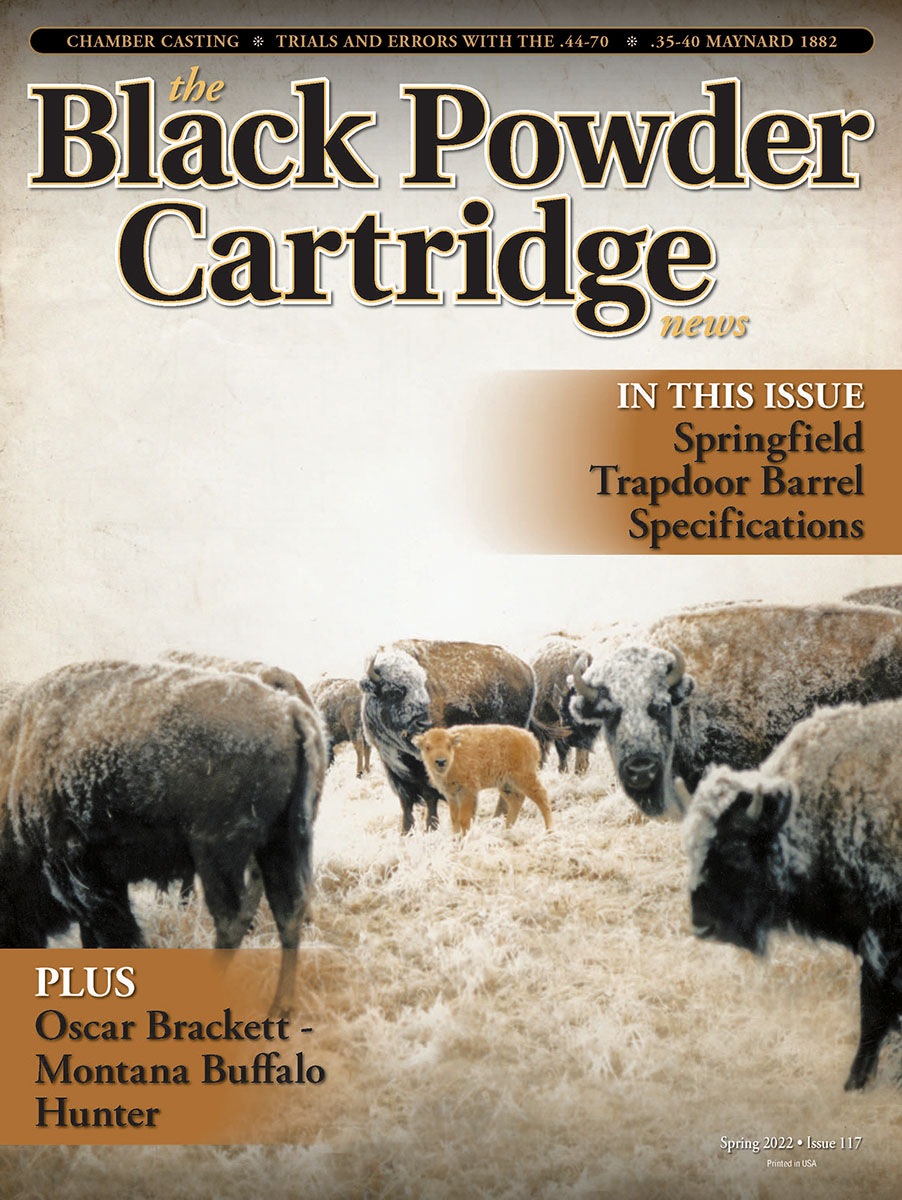Blades of the U.S. Dragoons
feature By: William P. Mapoles Photos by Suzie Nichols | March, 22
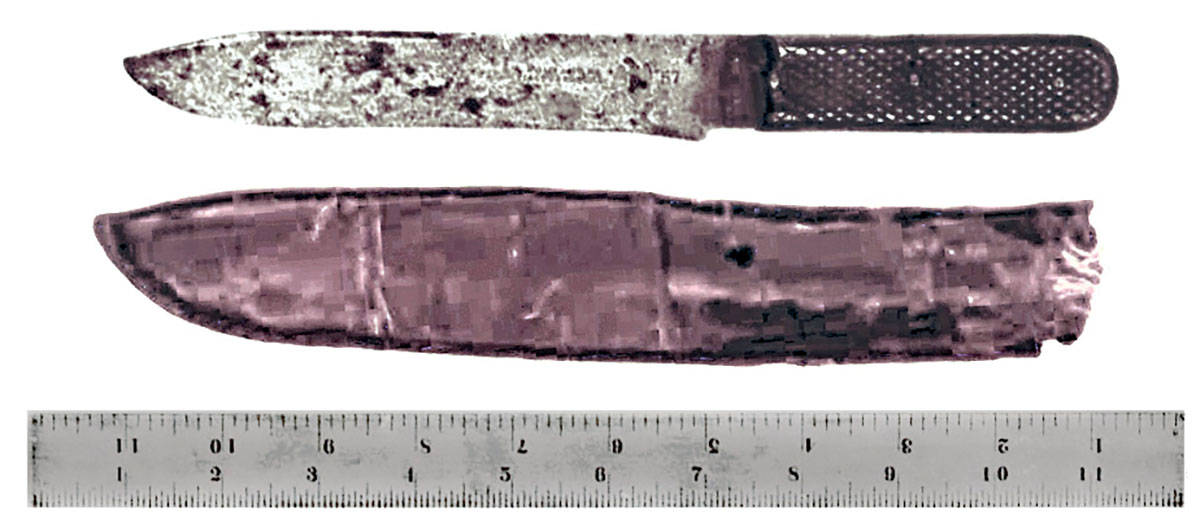

Company K was formed in 1835, and for several years they were stationed in Indian Territory at Fort Gibson, Oklahoma, and at Fort Leavenworth, Kansas. In 1845, they explored the South Pass in the Rocky Mountains, travelling over 2,000 miles in less than 100 days. In 1846, they were part of the 3700-man “Army of the West” under General Stephen W. Kearny, who took Santa Fe and eventually all of California. Next, they fought in Mexico and returned to the U.S. in 1848, after which they were stationed in the Pacific Northwest. In the mid-1850s, they were back in the New Mexico Territory, where they dealt with the Apaches and Navajos until 1861, when they were sent to Pennsylvania to fight in the Civil War. How about that for a tour of duty all over the American West? Just imagine the great stories one of these grizzled veterans could tell you over a glass of beer!
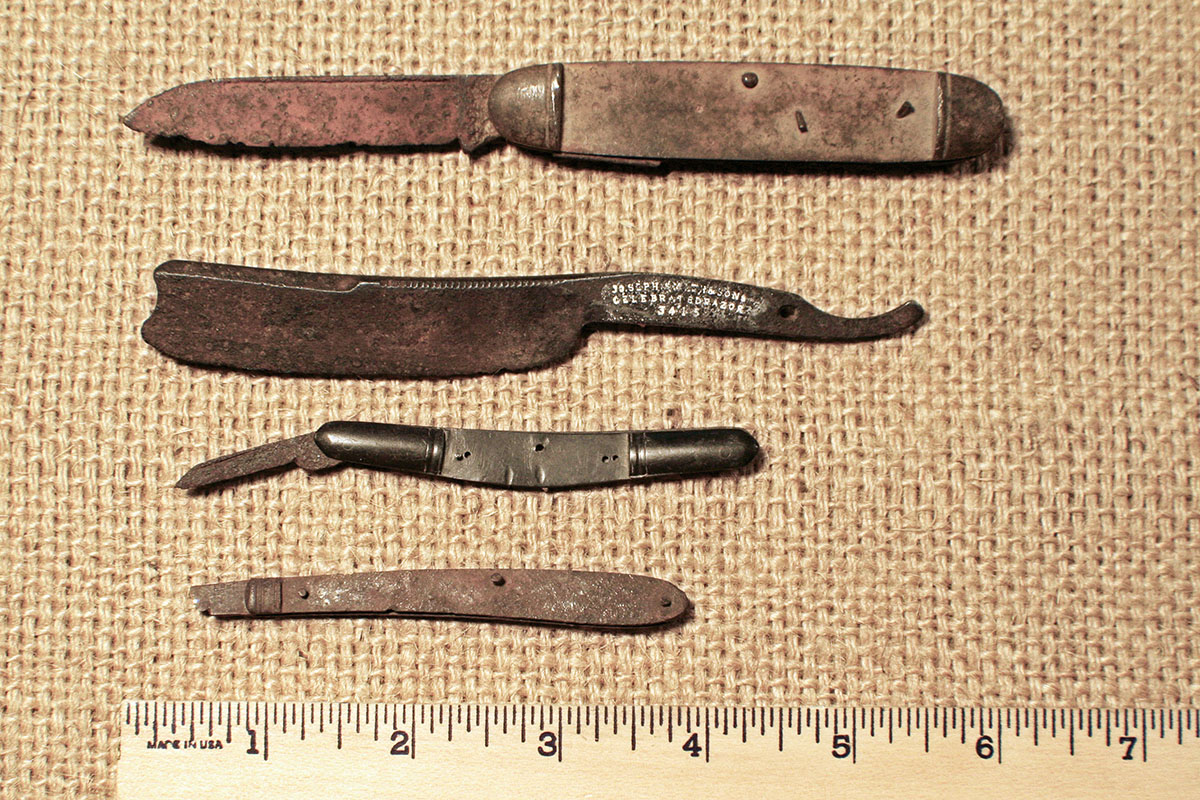
The Dragoons were known to favor the “Green River” brand of knives, which became very popular in the 1840s and 1850s. Tens-of-thousands of Green River knives were sent out West and they were known to be durable with good steel, and relatively cheap. The old saying, “give it to him up to Green River” meant to stab someone up to the brand name on the blade, which was near the grip. One Dragoon company commander even bought enough Green River knives out of his own pocket to equip his entire company. Now that was an officer looking out for his men!
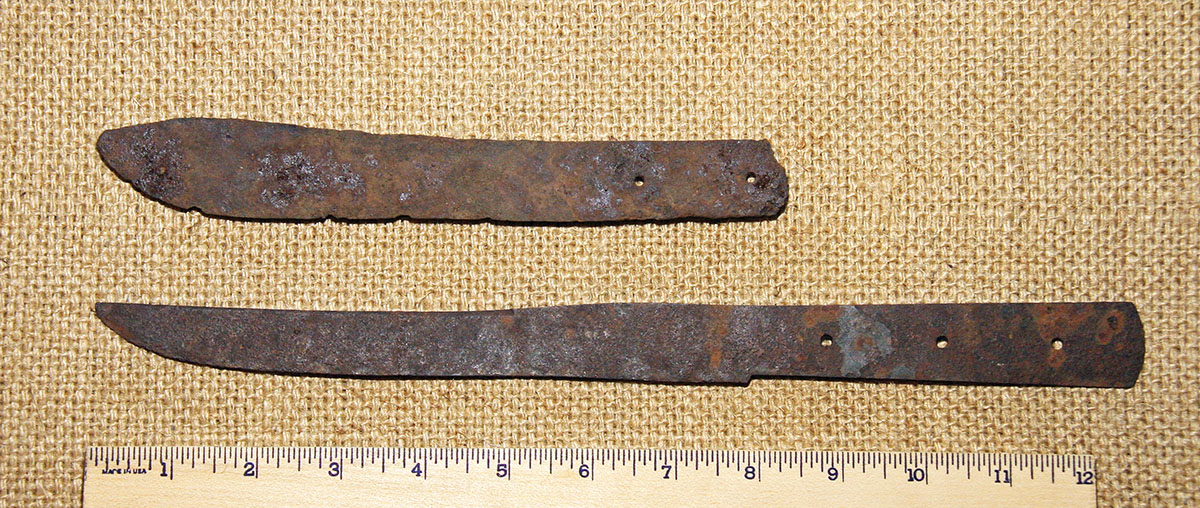
All of the following blades in this article are from a museum collection, and were found at a remote 1st Dragoon fort in Arizona (Fort Buchanan) that was in operation from 1857 to 1861. Inexpensive belt knives were available for purchase in the sutler’s store at almost every fort, and judging from the trash left behind, a major purpose for these knives was to open the tough iron cans with lead seams that their food came in. There were no can-openers. After bouncing around in the back of a supply wagon for several thousand miles, I’m sure the contents of the cans picked up plenty of lead, and you know what happens when you ingest lead. The shape of the top knife is similar to an old Green River design, but it is a knock-off with a very thin blade and only a few small pins to secure the wooden scales, which have rotted away. The longer blade is even thinner to the point of being way too flimsy for any practical use. My guess is that the original owner got totally frustrated with it and flung it as far as he could into the boonies.
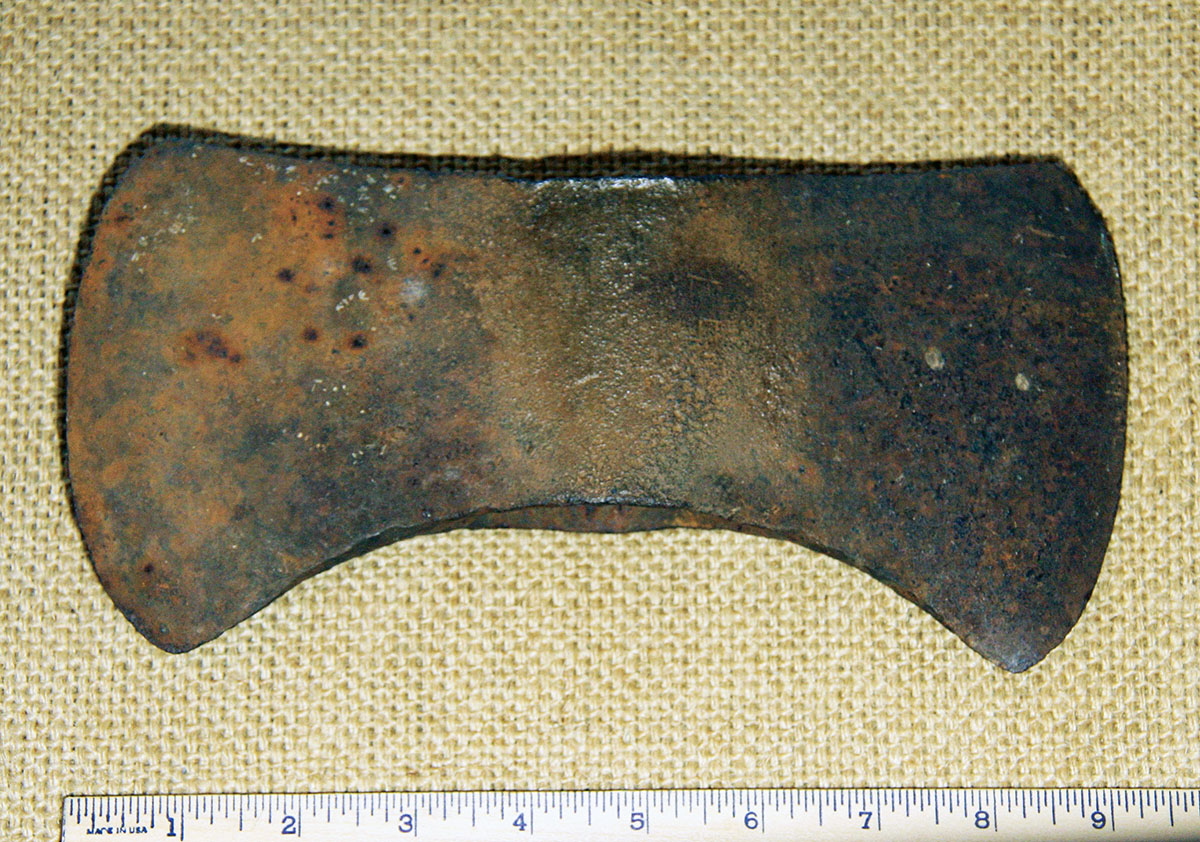
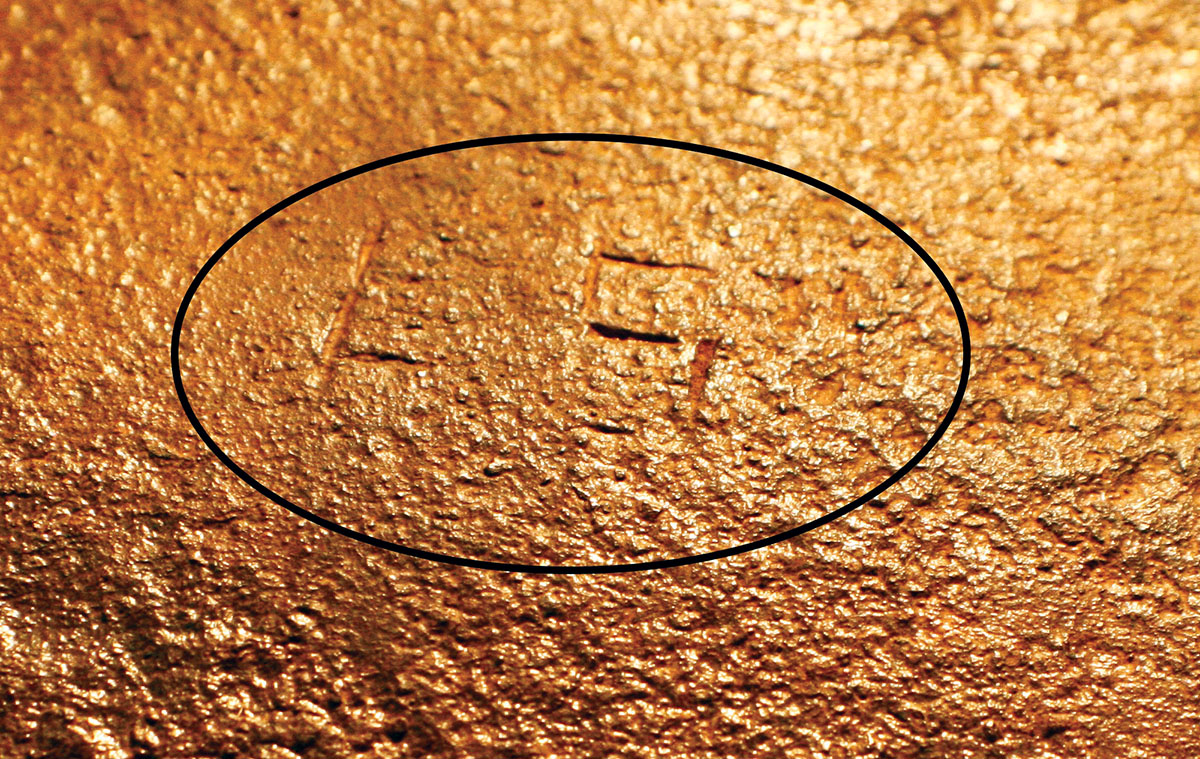
Tiny pen knives were used by the soldiers who could read and write for sharpening pens/pencils, cleaning under their fingernails and for picking their teeth. The small rounded ends (bolsters) were also perfect for digging out ear wax. The larger pocket knives were not significantly different from those made today. Fingernails were trimmed with pocket knives or filed down using a rock like an emery board. Ersatz “tooth brushes” were made by cutting a green twig with your knife, then chewing the end until it became frayed like the end of a rope. Then you would rub the frayed end over your teeth to remove the plaque. The straight razor pictured is a medium-sized true wedge (not hollow ground) stamped “Joseph Smith & Sons/ Celebrated Razor/ 3415.” Some 1st Dragoon units had very lax shaving standards, and flamboyant mustaches were the style of the day.
The double-bit ax head is very interesting since it belonged to an identified soldier. He cut his initials “ES” into the side with his knife. This is truly fortunate because his name is on the 1860 census of the fort. His name was Edwin A. Snow, 24 years old, from Massachusetts and he was a private in Company D of the 1st Dragoons. The fort was abandoned in 1861, when the Dragoons fled at the approach of a Confederate Army. Before leaving, the Dragoons were told to destroy all excess gear, to burn the fort and to escape carrying “plenty of ammunition.” Rather than carry this large cumbersome ax on his horse, Edwin Snow buried it so the Rebs and Indians couldn’t find it. Nothing is left of the fort today.
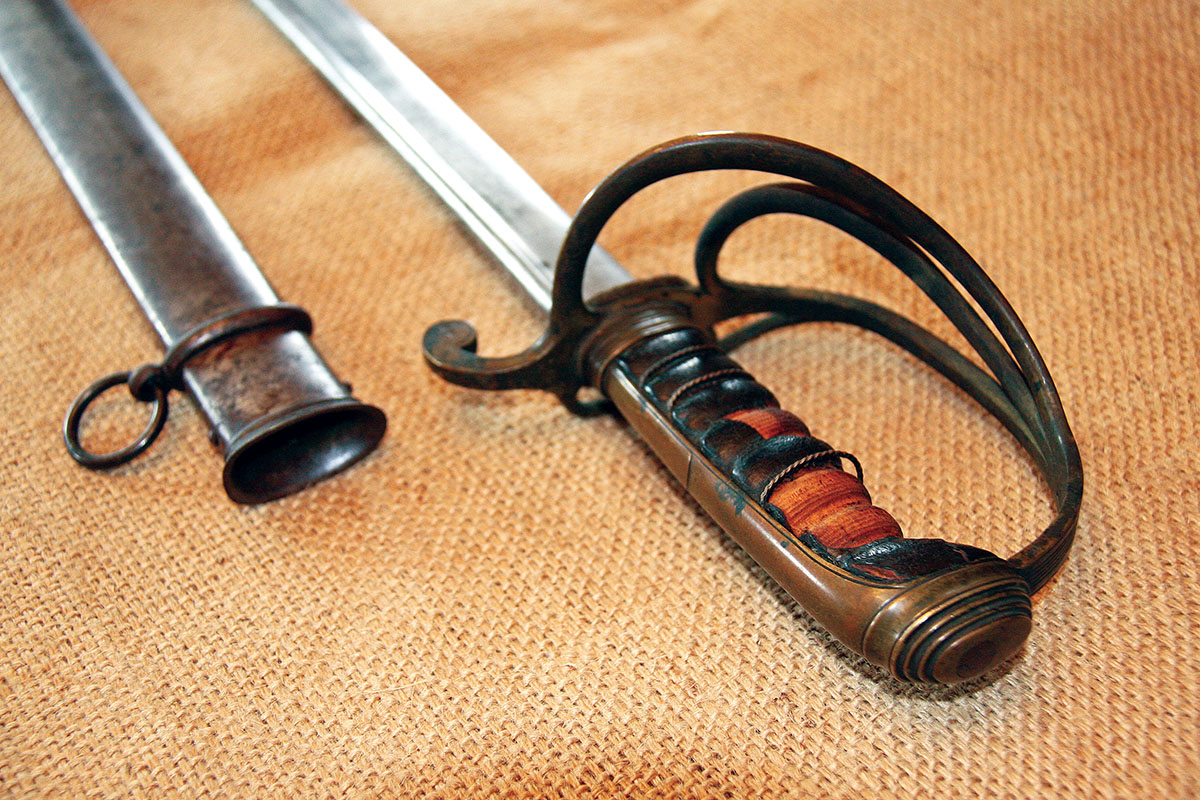
The saber designed specifically for the Dragoons was the Model of 1833, which was patterned after a British saber, and was used by some Dragoons until the mid-1850s.2 Some found it too light, so the heavier Model 1840 was developed. The very substantial M1840 earned the name “wrist-breaker” for a reason, so the lighter Model 1860 saber was eventually adopted, completing the circle back to a light blade. In any case, the Dragoons didn’t like carrying sabers on Indian duty, because they rattled loudly and got dull quickly in their metal scabbards. It was said that if one got close enough to an Indian to use a saber, “it was about even odds as to who goes under first.”
End Notes
1. Many thanks to Adrian VanDyk, former owner of the Company K, 1st Dragoons knife, for the information and photos of the knife.
2. Jim Brown, renowned U.S. saber expert, told me that both the M1833 and the M1840 were used simultaneously by the Dragoons during the Mexican War (1846 to 1848). He feels that the M1833 was completely phased-out within the Dragoons by the mid-1850s. However, the M1833 was still used by other units, including the Confederacy, up through the Civil War.


